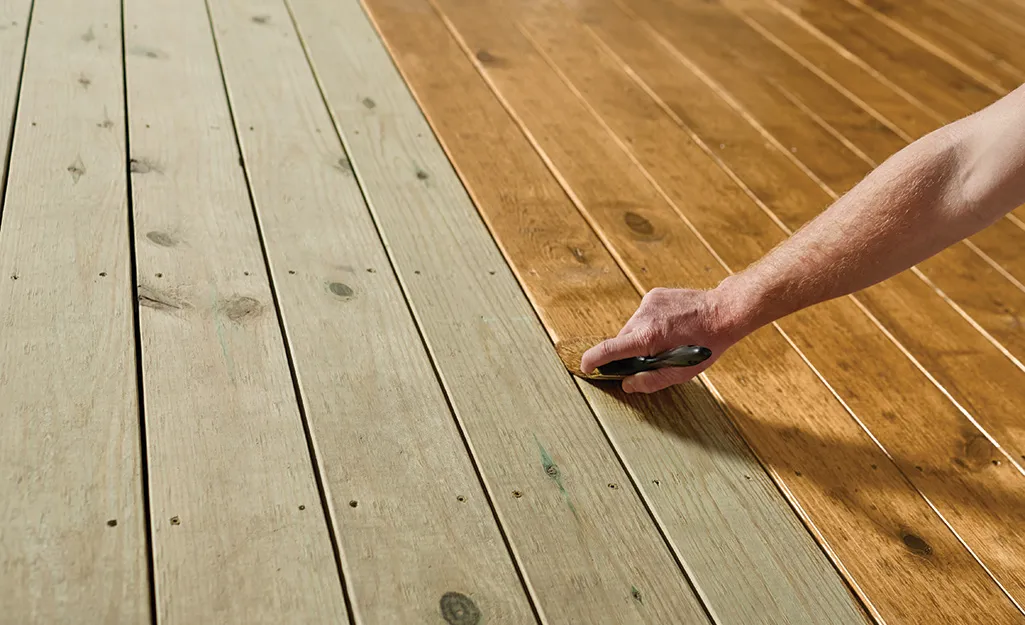
Best Deck Sealer: Your Complete Guide to Protecting Your Deck

Is your deck looking gray and weathered? Are you tired of seeing your beautiful outdoor space fade away?
Your deck faces harsh weather every single day. Rain, snow, sun, and wind all work together to damage your wood. But here's the good news: choosing the best deck sealer can protect your investment and keep your deck looking amazing for years.
We know picking the right sealer feels confusing. With so many options on store shelves, how do you choose? This guide will walk you through everything you need to know to make the perfect choice for your deck.
What Makes a Deck Sealer the Best?
The best deck sealer does more than just make your deck look good. It creates a protective barrier against nature's worst enemies.
Top sealers protect against:
Water damage and rot
UV rays that fade wood
Mold and mildew growth
Cracking and splitting
A good sealer soaks deep into the wood fibers. It doesn't just sit on top like paint does.
Types of Outdoor Wood Sealers
Water-Based Sealers
Water-based sealers are easy to work with and clean up. They dry fast and don't smell strong.
Best for:
Beginners
Quick projects
Areas with good ventilation concerns
Downsides:
Don't last as long
Less protection than oil-based options
Oil-Based Sealers
Oil-based sealers soak deeper into wood. They offer better protection but take longer to dry.
Best for:
Maximum protection
Older, weathered decks
Long-term results
Downsides:
Strong smell
Longer drying time
Harder cleanup
Combination Stain and Sealer
The best deck stain and sealer products do two jobs at once. They add color while protecting your wood.
Benefits:
Save time and money
Even color coverage
One-step application
Perfect for:
Decks that need color
Busy homeowners
First-time deck owners
How to Choose the Right Sealer for Your Deck
Step 1: Check Your Wood Type
Different woods need different protection. Here's what works best:
Pressure-treated lumber:
Needs time to weather first
Works with most sealers
Wait 3-6 months before sealing
Cedar and redwood:
Naturally rot-resistant
Need UV protection most
Work well with clear sealers
Composite decking:
Check manufacturer guidelines
May not need sealing
Some sealers can damage composite
Step 2: Consider Your Climate
Where you live affects which sealer works best.
Hot, sunny areas:
Need strong UV protection
Oil-based sealers work better
Reapply every 1-2 years
Wet, humid climates:
Focus on water resistance
Mold and mildew protection crucial
Look for antimicrobial additives
Cold, snowy regions:
Freeze-thaw protection important
Deep penetration essential
Choose flexible formulas
Step 3: Decide on Appearance
Do you want to change your deck's look or keep it natural?
Clear sealers:
Show natural wood grain
Highlight wood's beauty
Need more frequent reapplication
Tinted sealers:
Add subtle color
Hide minor imperfections
Last longer than clear options
Solid color stains:
Completely change deck color
Hide major flaws
Longest-lasting option
Top-Rated Deck Sealers
Best Overall: Thompson's Advanced Natural Wood Protector
This sealer offers excellent protection without changing your wood's appearance. Consumer Reports consistently rates it among the top performers.
Why it's great:
Deep penetration
Long-lasting protection
Easy application
Best for Beginners: Behr Premium Semi-Transparent Stain
This outdoor wood sealer is perfect for first-time users. It's forgiving and looks great even with amateur application.
Key features:
One-coat coverage
Multiple color options
Water-based formula
Best for Heavy Weather: Penofin Red Label
This oil-based sealer handles extreme weather better than most. It's the go-to choice for harsh climates.
Standout qualities:
Superior water resistance
Excellent UV protection
Professional-grade formula
Step-by-Step Application Guide
Step 1: Prepare Your Deck
Clean your deck thoroughly before applying any sealer.
Cleaning steps:
Sweep away all debris
Scrub with deck cleaner
Rinse with garden hose
Let dry completely (24-48 hours)
Step 2: Choose the Right Day
Weather matters when applying sealers.
Perfect conditions:
Temperature between 50-80°F
No rain in forecast for 24 hours
Low humidity
Minimal wind
Step 3: Gather Your Supplies
You'll need:
Deck sealer
Brush or roller
Drop cloths
Rubber gloves
Safety glasses
Step 4: Apply the Sealer
Work in small sections for best results.
Application tips:
Start at one end
Work with the wood grain
Keep a wet edge
Don't let sealer puddle
Step 5: Let It Dry
Follow the manufacturer's drying time exactly.
Drying guidelines:
Don't walk on deck while wet
Keep pets and kids away
Avoid heavy furniture for 24 hours
Wait 72 hours before heavy use
Common Mistakes to Avoid
Skipping the Prep Work
Many people rush to apply sealer without proper preparation. This always leads to poor results.
Always:
Clean thoroughly
Fix loose boards
Sand rough spots
Let wood dry completely
Applying Too Much
More sealer doesn't mean better protection. Too much creates a sticky mess that never dries properly.
Remember:
Thin coats work better
Follow coverage guidelines
Don't over-brush
Ignoring Weather Conditions
Applying sealer in wrong weather ruins the job.
Never seal when:
Rain is coming
It's too hot or cold
Humidity is high
Wood is wet
Maintenance Tips
Regular Cleaning
Keep your sealed deck clean to make the sealer last longer.
Cleaning schedule:
Sweep weekly
Wash monthly
Deep clean twice yearly
Remove stains immediately
Know When to Reapply
Most sealers need reapplication every 1-3 years.
Signs you need new sealer:
Water soaks in instead of beading
Wood looks gray or weathered
Sealer is peeling or flaking
Color is fading
Touch-Up High-Traffic Areas
Some spots get more wear than others.
Focus on:
Stairs and railings
Around grills and furniture
Near doors and gates
Sunny, exposed areas
Money-Saving Tips
Buy in Bulk
Sealer costs less per gallon when you buy larger containers.
Shop End-of-Season Sales
Many retailers discount outdoor wood sealers in fall and winter.
Do It Yourself
Professional deck sealing can cost $3-6 per square foot. DIY costs under $1 per square foot.
Safety Considerations
Ventilation
Always work in well-ventilated areas, especially with oil-based products.
Protective Gear
Always wear:
Rubber gloves
Safety glasses
Long sleeves
Closed-toe shoes
Storage
Store leftover sealer safely away from children and pets.
Conclusion
Protecting your deck doesn't have to be complicated. The right sealer applied properly will keep your outdoor space beautiful for years.
Remember to choose based on your wood type, climate, and desired appearance. Take time to prepare properly and follow application instructions exactly.
With the right best deck sealer and a little effort, you'll have a deck that looks great and lasts for decades. Your future self will thank you for the protection you provide today.

© 2025 | All Rights Reserved | Privacy Policy